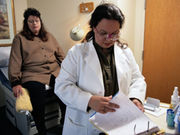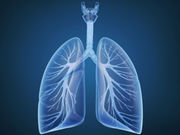Home 2016
Archives
Screening Rates Down With Increasing Patient Panel Size
Increasing panel size linked to decreases in cancer screening, continuity, comprehensiveness of care
PPARγ Antagonist Imatinib Improves Insulin Sensitivity
Imatinib improves insulin sensitivity without causing side effects seen with other PPARγ-targeting drugs
No Benefit for Delaying Pregnancy After Early Loss
Couples with 0- to 3-month interval more likely to achieve live birth versus >3 months
Stem Cell Sources Used for HSCT Vary by Country, Resources
Use of bone marrow most common in Americas, Europe; increases with increasing income
Incidence of Radiation-Induced Breast Cancer Examined
Women with large breasts projected to have increased risk of radiation-induced breast cancer
Acute Ozone Exposure Ups Stress Hormone in Humans
Increased stress hormones, alterations in lipid metabolites are similar to changes seen in rodents
Platelet-Rich Plasma Efficacious for Atrophic Acne Scars
Combo of platelet-rich plasma and microneedling shows good response in split-face study
Allergic Rhinitis Constitutes Considerable Burden
Patients with prevalent AR more likely to develop asthma, mental health comorbidities
Yoga Positions Linked to Increase in Intraocular Pressure
Increases noted within one minute after assuming position in individuals with, without glaucoma
Nitinol Coils May Up Ability to Exercise With Emphysema
Researchers find greater improvement in those treated compared to a placebo














